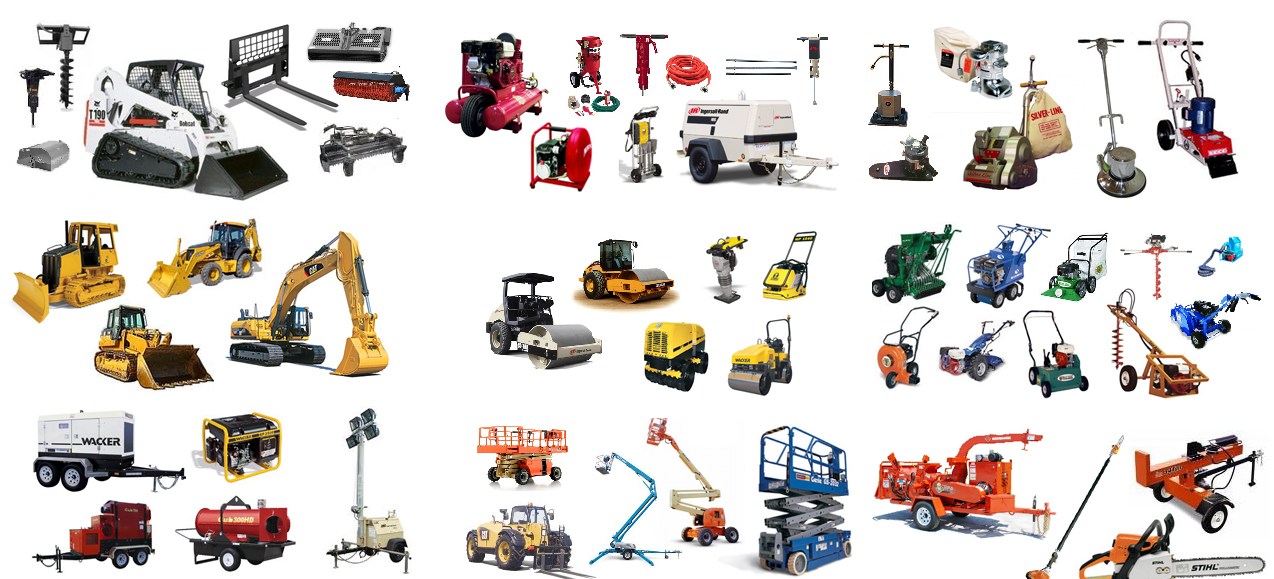Aerial Lift Rental: Versatile Training Solutions for High-Access Jobs
Aerial Lift Rental: Versatile Training Solutions for High-Access Jobs
Blog Article
Maximize Your Spending Plan by Recognizing the Expenses Connected With Building Devices Services
Comprehending the complete scope of expenses linked with building and construction devices leasings is vital for maximizing your budget plan. What techniques can be used to properly take care of these prices and ensure a much more reliable rental experience?
Summary of Rental Expenses
When considering building and construction devices leasings, understanding the associated prices is paramount for effective budgeting and job planning. Rental prices can differ substantially based upon numerous aspects, consisting of tools kind, duration of rental, and area. The initial rental fee usually reflects the tools's market demand and its connected operational abilities, influencing the overall expense.
In addition to the base rental rate, ancillary expenses may emerge, such as transportation fees, gas additional charges, and maintenance charges. It is necessary to account for these added costs to properly analyze the overall expense of renting out equipment. The rental duration can affect rates; longer services might certify for discounted prices, while short-term leasings may sustain higher daily costs.

Breakdown of Rental Rates
An extensive understanding of rental rates is essential for professionals and project supervisors intending to optimize their spending plans. Rental rates for building and construction tools typically include a number of parts, consisting of base prices, time-based costs, and use charges.
Base prices are the core charges related to the leasing of the equipment, typically figured out by the kind and size of the machinery. These rates can differ significantly, influenced by aspects such as tools demand, schedule, and local market patterns. Time-based charges, which might be daily, weekly, or monthly, offer to accommodate various job timelines and rental periods.
Furthermore, rental rates may include usage fees, which apply when devices is used past a specified limit, making sure that the rental firm can make up damage. Seasonal demand variations can likewise impact rental rates, with peak construction seasons generally regulating higher costs.
In addition, understanding the rental firm's plans pertaining to upkeep and insurance coverage can supply further understanding right into the overall expense structure. By examining these parts, contractors can make enlightened choices, making sure the selection of rental devices aligns with both job requirements and budget plan constraints.
Extra Costs to Take Into Consideration
Understanding the complexities of added charges is vital for contractors to handle their total service expenditures efficiently. Beyond the basic rental prices, different extra costs can considerably influence the total cost of devices service. These charges frequently consist of distribution and pick-up fees, which can differ based upon distance and logistics involved in carrying the equipment to and from the job site.
Furthermore, some rental firms might enforce gas surcharges if the devices is returned with much less gas than when rented out. It is additionally essential to recognize prospective cleaning costs, especially for specialized devices that calls for comprehensive upkeep after usage.

Extensively examining the rental arrangement and clearing up these added costs ahead of time can assist service providers ensure and stay clear of unanticipated expenses that budgets stay undamaged throughout the job lifecycle.
Repair And Maintenance Costs
Regular repair and maintenance expenses are often overlooked elements that can substantially influence the overall price of building devices rentals. When renting equipment, it is important to take into consideration not just the rental charges yet additionally the potential prices related to maintaining the machinery in ideal operating problem.
Lots of rental firms include basic upkeep as part of the rental contract; nonetheless, a lot more unanticipated breakdowns or considerable fixings browse around here can result in added expenses. It's vital to evaluate the rental contract very carefully to comprehend what upkeep solutions are covered and what obligations drop on the tenant.
Moreover, tools that is not properly maintained can result in ineffectiveness on duty site, possibly raising and triggering hold-ups task expenses. To minimize these threats, it is recommended to perform regular inspections and preserve open interaction with the rental service provider relating to any type of issues that arise throughout use.
Insurance Coverage and Obligation Costs
Insurance and liability prices are critical elements that can dramatically affect the total expense of building and construction equipment leasings (aerial lift rental). These prices make certain that both the rental company and the client are safeguarded from possible monetary losses developing from accidents, damages, or theft throughout the rental period

In addition, clients should understand any kind of deductibles or exemptions in the insurance coverage, as these can affect potential out-of-pocket expenses. Understanding the terms of any type of insurance coverage is essential to prevent unanticipated prices. Eventually, budgeting for insurance and obligation expenditures can assist make certain a smoother rental experience and safeguard against economic risks related look at here now to construction jobs.
Verdict
In final thought, an extensive understanding of the prices associated with construction equipment rentals is vital for efficient budget plan monitoring. Eventually, informed decision-making pertaining to devices services contributes to the total success of building and construction ventures.
Rental costs can vary significantly based on several variables, including equipment type, duration of service, and place (aerial lift rental). The rental period can influence rates; longer services might qualify for affordable rates, while temporary leasings might incur greater day-to-day charges
By conducting thorough research and involving with trusted rental business, specialists can effectively navigate the intricacies of rental rates, ultimately optimizing their monetary resources.
Past the conventional rental prices, various extra charges can substantially impact the overall price of equipment service. Rental firms often provide obligation insurance that covers injuries to third events or damages to residential or commercial property, while recommended you read equipment damages insurance policy can cover the price of repairs or substitute if the rented out tools is damaged.
Report this page